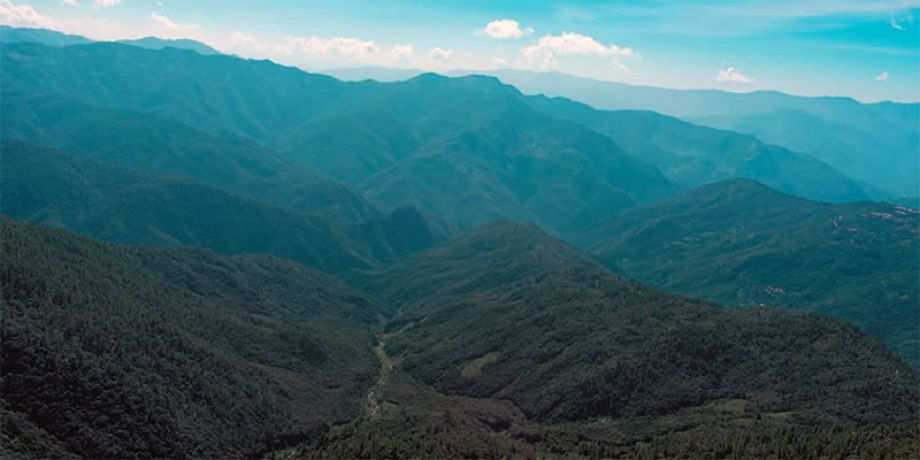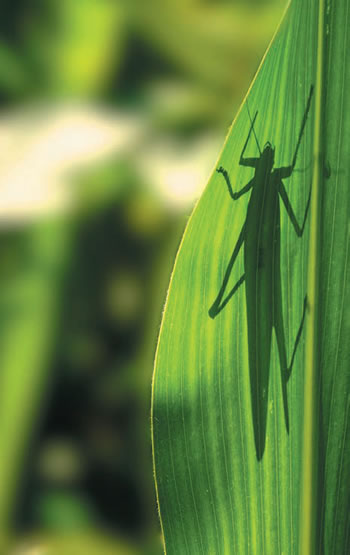
Protecting Diversity
A young girl and her mother went to the riverbank looking for wild vegetables and leaves. The girl and her mother thought that the river split somewhere above and then came to meet again so that they would form an island. After taking their lunch, they decided to split – the mother went to the side of Mali Hka and the daughter went to the Nmai Hka side.
They walked and walked into the forest looking for fresh, wild vegetables. Soon it became dark ,but still they could not find where the rivers meet again. Soon they became scared and got worried. The young girl called out for her mother, “Nu e, Nu e, Nu e!” (Mother, mother!) But her mother could not hear her. The mother also called out for her daughter, “Sha e! Sha e!” (Daughter, daughter). But the daughter did not hear her. They could not find the way back to where they started. They soon got tired and fell asleep. Days and nights went by in this way.
 After days of searching, without real food and proper sleep, both mother and daughter fell down and died. Then they magically turned into cicadas or hkra. During summer, along the Mali Hka river to this day you can hear the calls, “Sha e, sha e.” And along the Nmai Hka river you can hear them calling “Nu e, nu e.” The cicadas call out to each other from the top of high trees.
After days of searching, without real food and proper sleep, both mother and daughter fell down and died. Then they magically turned into cicadas or hkra. During summer, along the Mali Hka river to this day you can hear the calls, “Sha e, sha e.” And along the Nmai Hka river you can hear them calling “Nu e, nu e.” The cicadas call out to each other from the top of high trees.
I came upon this story while studying the Kachin language. I asked one Kachin student about them. He said that locally they are called hkra, and as a young boy they used to catch and play with them. In the summer months (March-May), they appear in large numbers and create much noise at night. But recently, he lamented and wondered that he does not hear or see them as commonly as before.
The cicadas are not the only creatures disappearing in Myanmar. Many other insects and animals are slowly vanishing some possibly not yet even discovered by scientists. Myanmar is home to 331 endangered species, according to the latest research by the International Union for Conservation of Nature (IUCN), including birds, orangutans, elephants, deer, freshwater turtles, pangolins and tigers. Habitat loss due to deforestation and wildlife trade are leading factors of biodiversity loss.
On one of my trips with my friend Shwebo, a Buddhist monk, we visited a Buddhist monastery within a natural forest reserve for wild deer – the Eld’s deer (Rucervis eldii) also known as the golden deer. The monks are very involved in the conservation of the deer which numbers to about 40 individuals in Shein Makkar Sanctuary. According to IUCN, the deer is endangered due to intense hunting − for its meat as “medicine,” and as trophies (because of its antlers). The Eld’s deer is extinct in China, Thailand and Vietnam.
On our way back to Mandalay, we took the local boat through the majestic Irrawaddy (Ayeyarwady) River. We sat on the roof of the passenger boat, as I was mesmerized by images of the quaint villages and beautiful landscape of the riverbanks. Shwebo called my attention, “Kurt look… La bien, La bien!” Sadly I only saw the dorsal fin of what could be a river dolphin. IUCN reports that the Irrawaddy dolphins are already critically endangered and close to extinction. They are not directly hunted or caught but, they are caught accidentally as by-catch. Habitat loss and degradation are also major threats to this species.
The northernmost state of Myanmar, Kachin, is also rich in biodiversity. In the sleepy town of Lungsha Yang, we were walking on the road just outside the parish church when a large animal came out of the bushes. The elephant with its mahout riding on top lazily walked on the main highway. I was so amazed at the sight. I have never seen an elephant outside it’s enclosure. Early last year in Tanai, the people of Awng Lawt village had to leave their homes to escape the fighting between the Kachin Independence Army and the Burmese Army. The mahouts and their elephants came to the rescue of sick, young and elderly villagers helping them cross a chest-deep river in Myanmar’s remote Kachin state.
The two rivers of Mali Hka and Nmai Hka meets at one point called the Mali Zup confluence which is the subject of the story above, is now threatened by a Chinese-funded dam project already postponed but still hangs over the whole area of the confluence. It has already displaced many families. The project will not only affect the immediate area but since the confluence is the start of the Irrawaddy (Ayeyarwady) River, down south the Irrawaddy dolphins, too will be impacted by any large development projects up north. Everything is interconnected.
To the local Kachin people, the forest is like a big supermarket – it is the source of everything from timber, bamboo and thatch for house building, wild meat (frogs, fish, bush animals) and wild vegetables (mushrooms, bamboo shoots, herbs and medicinal plants). The biodiversity of the forest is the food source of the people. Recently, the conversion of many forested areas into mono-crop plantations like banana plantations is also a major factor to biodiversity loss. Without biodiversity, local people also lose their local food source. When plantations take over these areas, sometimes a pond or stream is found within, restricting access to another food-source. Mono- cropping’s negative environmental impacts include pollution and decreased water-table levels affecting communities near these plantations. But another challenge is many locals are now also involved in banana plantation and extractive mining activities.
Cicadas existed even during the time of dinosaurs as shown by fossilized cicadas in amber stones discovered in one mining field. But now the call of the cicadas have been silenced by the sounds of chainsaws and gunshots, air bombs and the cries of women and children displaced by the ongoing conflicts. Often times these conflicts are driven by greed for natural resources like timber, minerals and precious stones (rubies, jade, amber).
Some will say that they are just insects. Why should we care? It is important to remember that insects are “pests” only because in some fashion they interfere with human values or interests. To one degree or another, all species that live in forest systems play important ecological roles. The cicada is no exception. For example, cicadas comprise an important prey species for birds and mammals, and the burrowing activity of cicada nymphs facilitates water movement within the soil.
Pope Francis reminds us in Laudato Sí that “it is not enough, however, to think of different species merely as potential resources to be exploited, while overlooking the fact that they have value in themselves.” Their value lies in their creation by God, and we do not have the right to cause their extinction and take away their ability to live their purpose and give glory to God, simply by their existence. (LS Paragraph 33.)
Myanmar’s biodiversity reflects the diversity of its peoples. Tribes and languages are as numerous as the country’s flora and fauna species. And their lives are intertwined and interconnected. When we protect biodiversity, we are also protecting the peoples, especially the indigenous peoples of Myanmar, who call the forests, the plains, the hills and mountains their home.
Next summer I look forward to hearing the call of the cicadas, “Nu e, nu e… sha e, sha e!”
Columban Fr. Kurt Zion Pala lives and works in Myanmar.